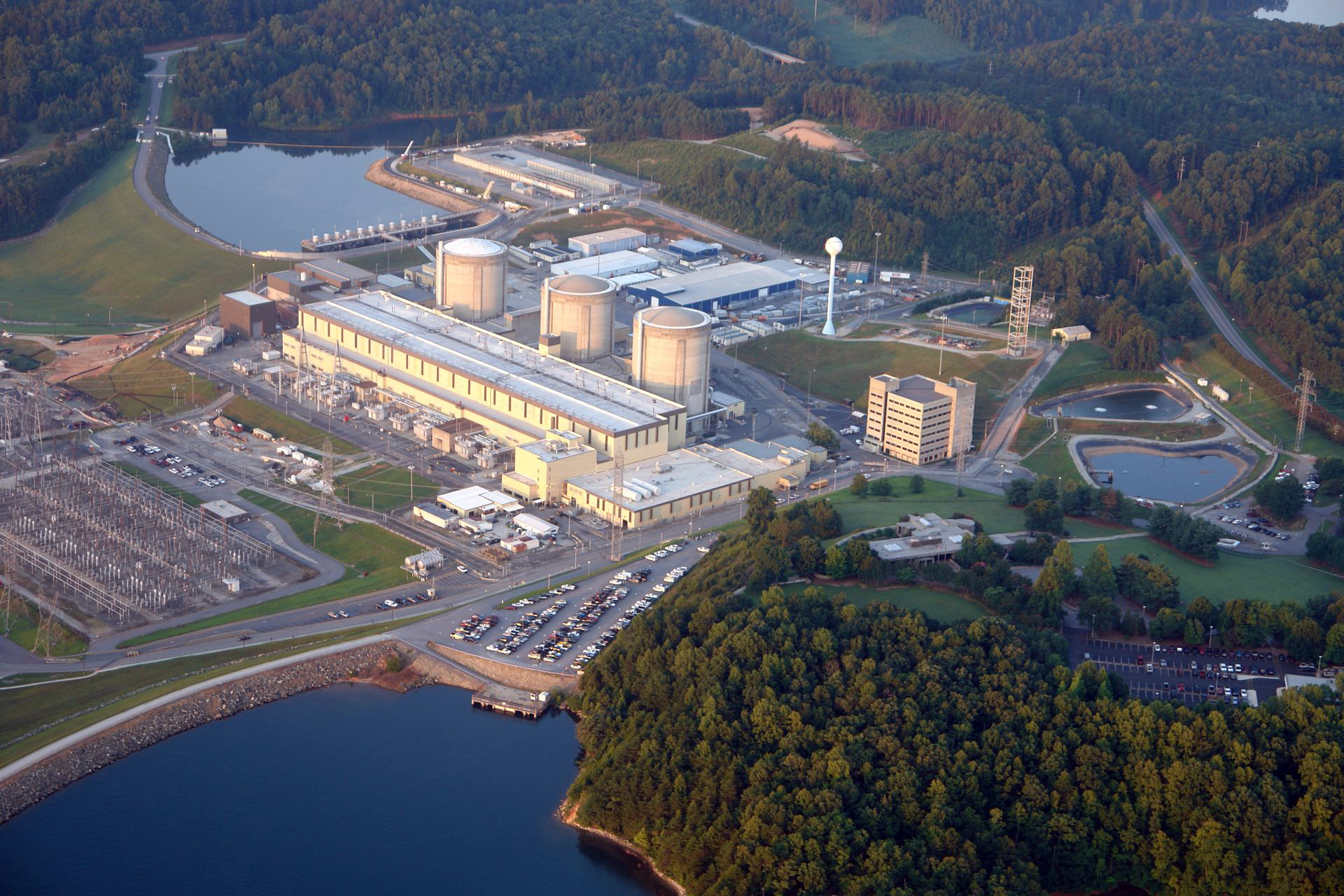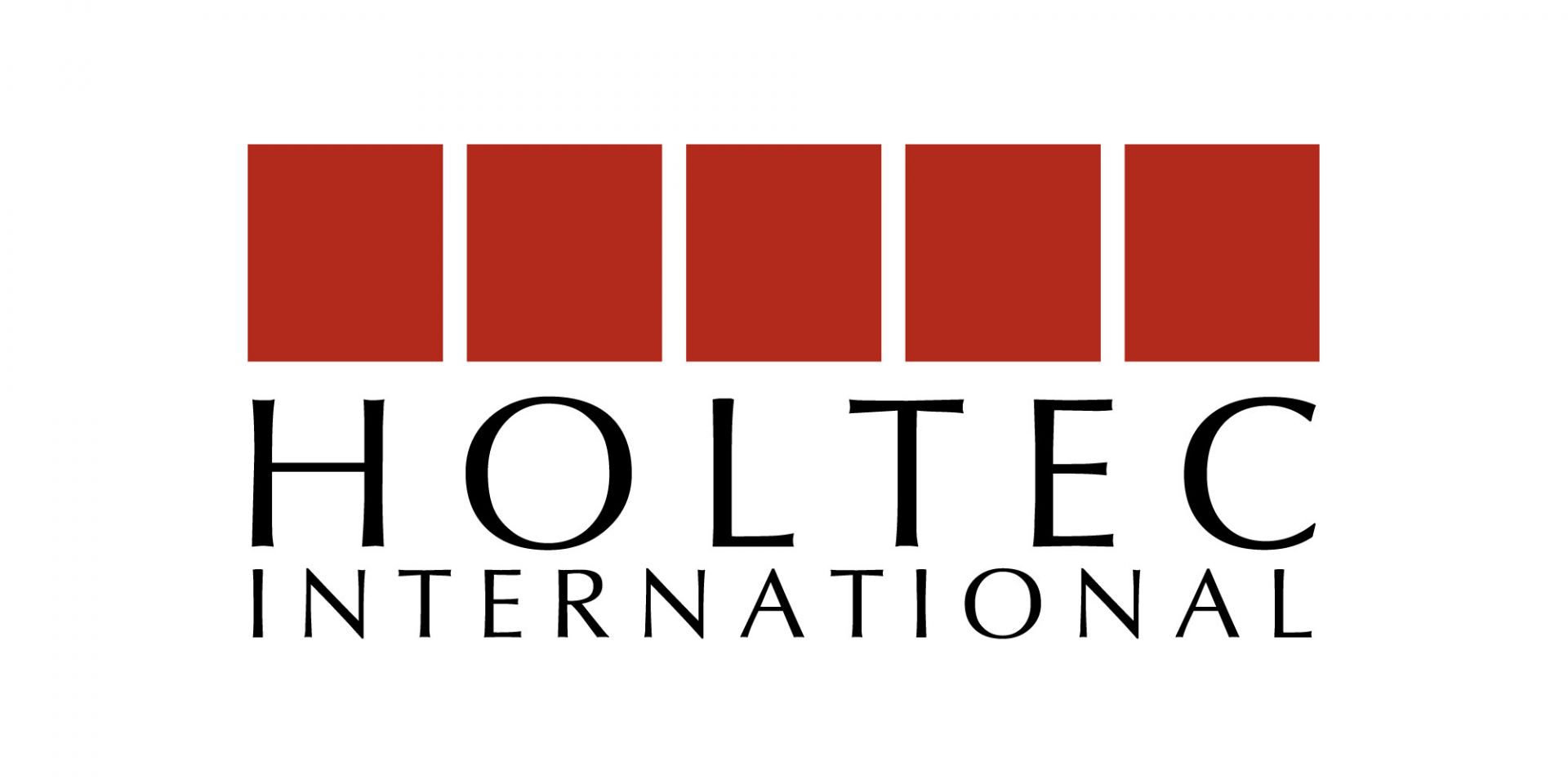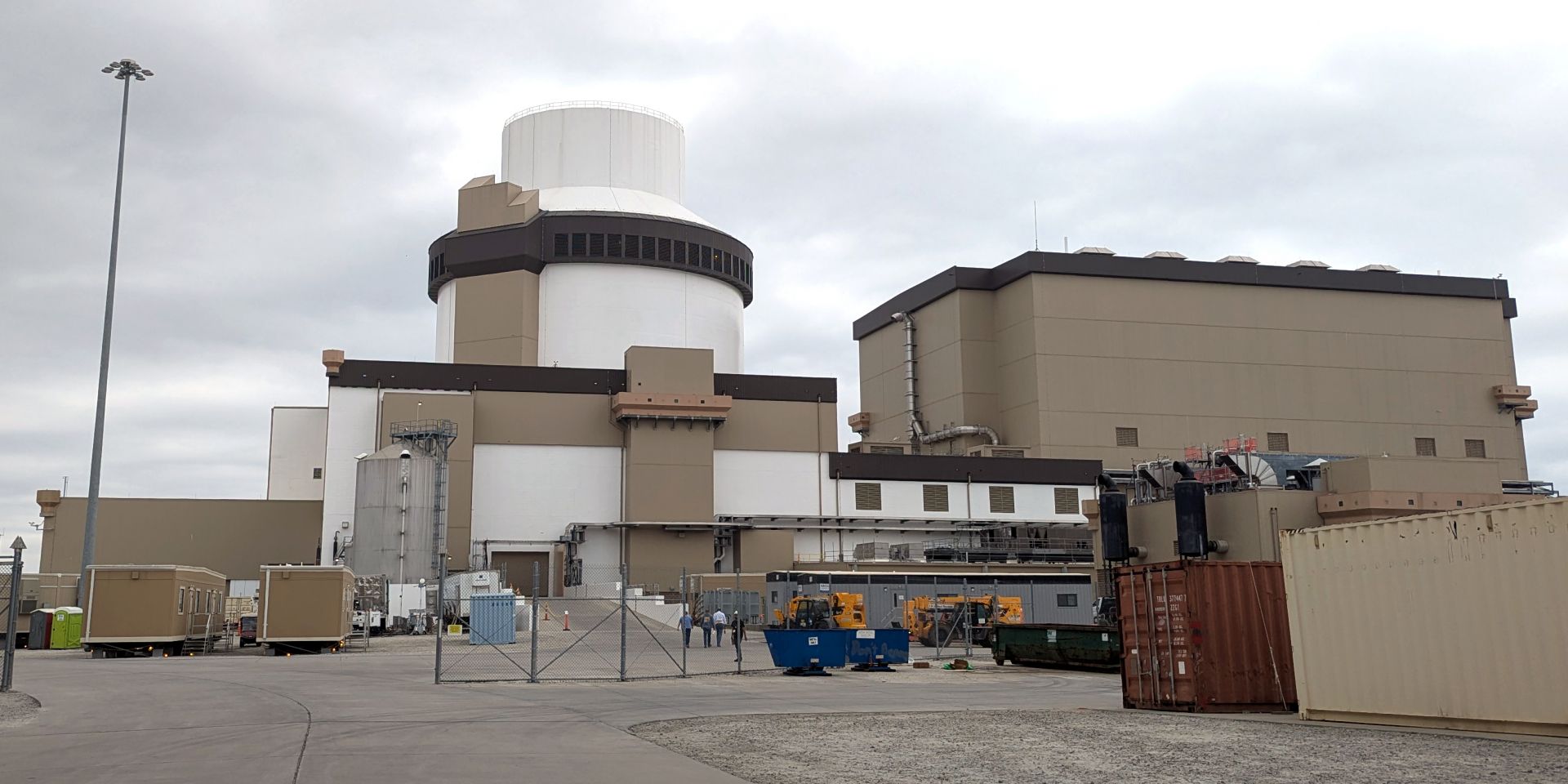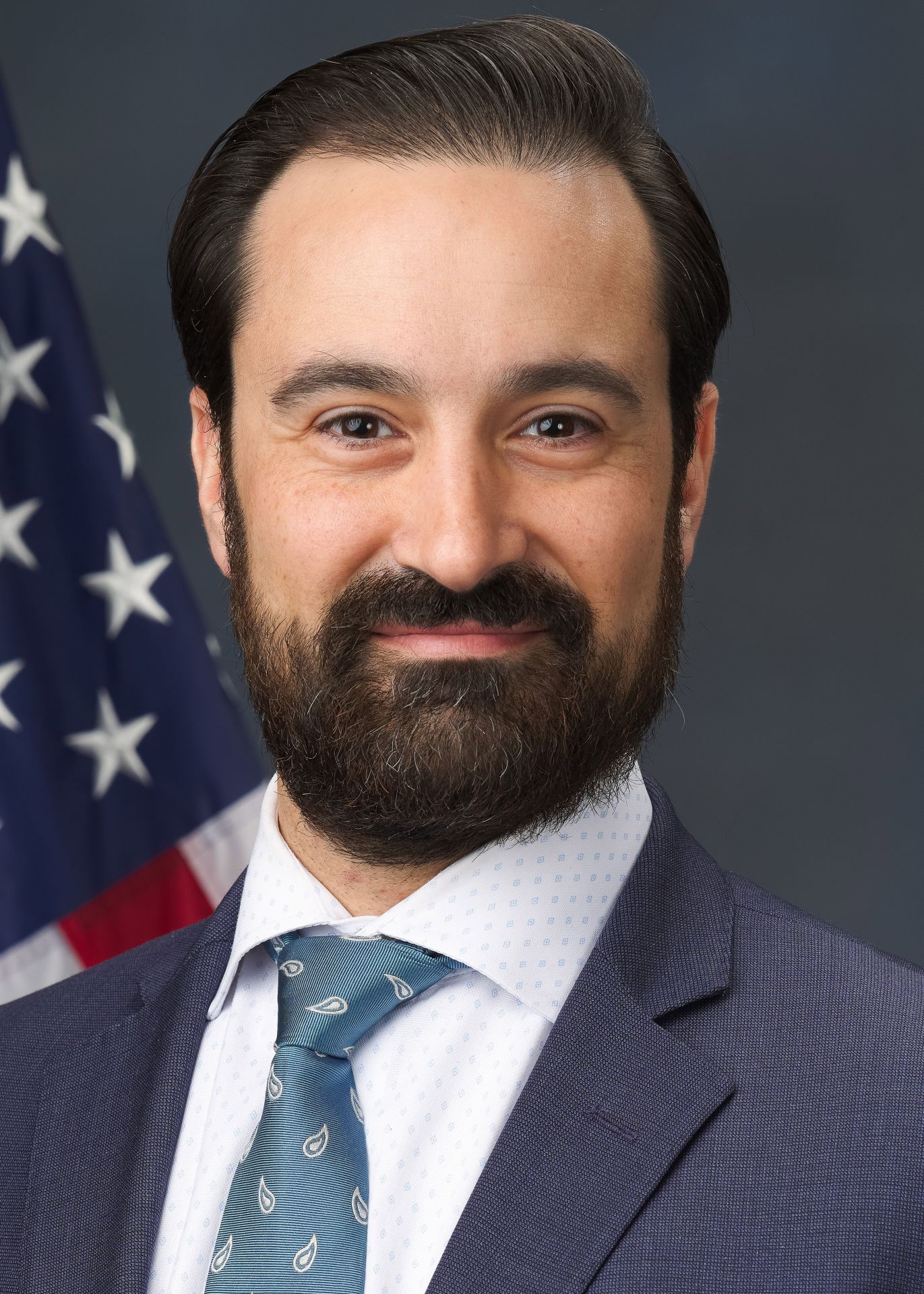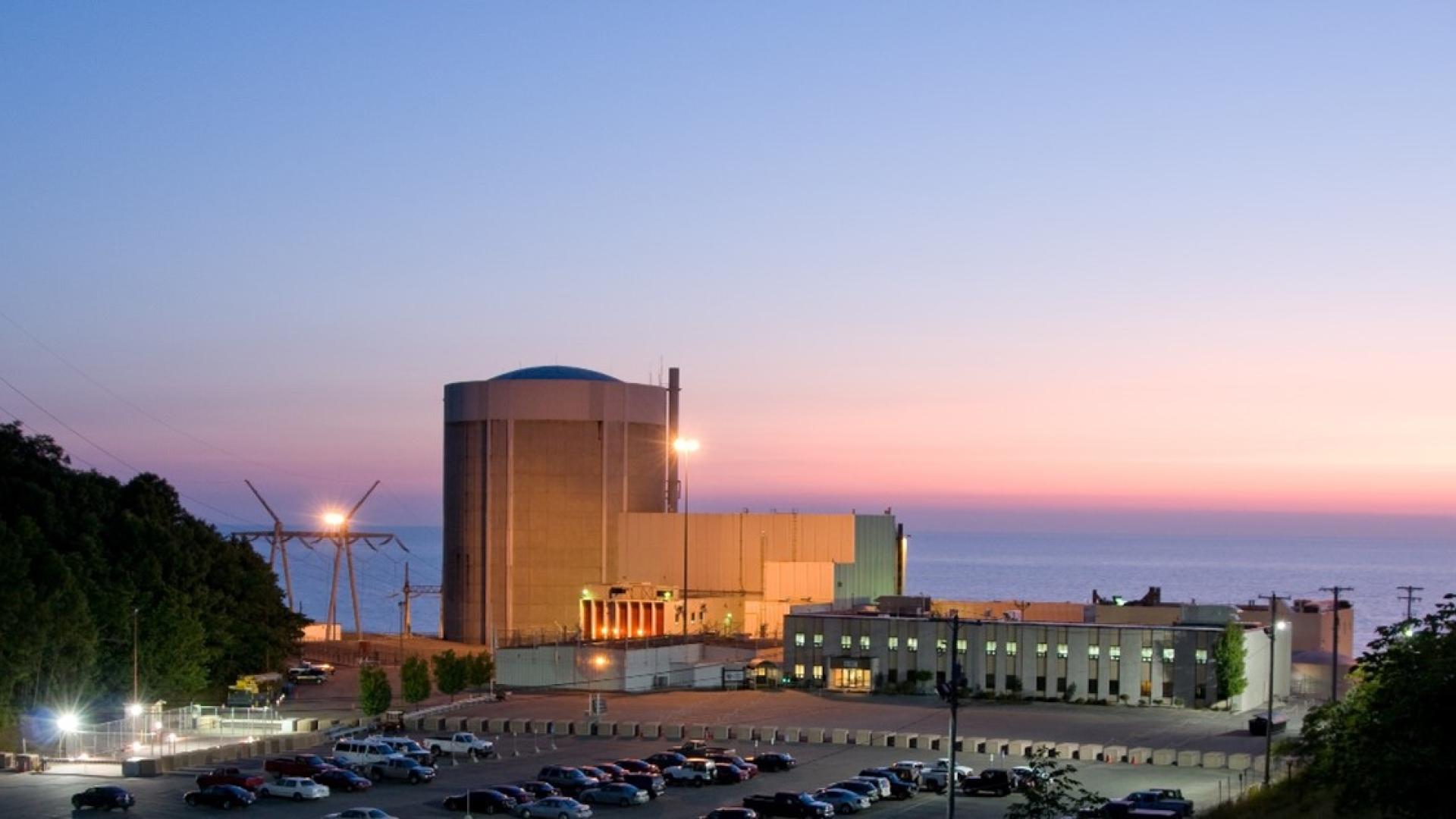Palo Verde nuclear power plant, near Tonopah, Ariz. (Photo: APS)
The top three utilities in Arizona are teaming up to explore opportunities to add nuclear generation facilities in the state.
Arizona Public Service (APS), Salt River Project (SRP), and Tucson Electric Power (TEP) announced in a February 5 news release that they are working together to assess possible sites, including retiring coal plants. The group is looking at possibilities for both small modular reactors—units generating 300 MW or less—and potential large reactor projects, which could generate nearly five times the power.
Oconee nuclear power plant. (Photo: Duke Energy)
The Nuclear Regulatory Commission has published its final environmental impact statement for the proposed subsequent license renewal (SLR) for Oconee nuclear power plant's Units 1, 2, and 3.
One of two unfinished Westinghouse AP1000 reactors is shown in this photo of the Summer construction site. (Photo: SCE&G)
South Carolina public utility Santee Cooper and its partner South Carolina Electric & Gas (SCE&G) called a halt to the Summer-2 and -3 AP1000 construction project in July 2017, citing costly delays and the bankruptcy of Westinghouse. The well-chronicled legal fallout included indictments and settlements, and ultimately left Santee Cooper with the ownership of nonnuclear assets at the construction site in Jenkinsville, S.C.
The Palisades nuclear power plant. (Photo: Holtec)
A Nuclear Regulatory Commission review board will hear oral arguments on February 12 on petitions concerning Holtec Palisades LLC.
The reactor building and the turbine building seen in October 2024 as employees worked on Vogtle Unit 3’s first-ever refueling outage. (Photo: Dot Schneider)
Southern Nuclear was first when no one wanted to be.
The nuclear subsidiary of the century-old utility Southern Company, based in Atlanta, Ga., joined a pack of nuclear companies in the early 2000s—during what was then dubbed a “nuclear renaissance”—bullish on plans for new large nuclear facilities and adding thousands of new carbon-free megawatts to the grid.
In 2008, Southern Nuclear applied for a combined construction and operating license (COL), positioning the company to receive the first such license from the U.S. Nuclear Regulatory Commission in 2012. Also in 2008, Southern became the first U.S. company to sign an engineering, procurement, and construction contract for a Generation III+ reactor. Southern chose Westinghouse’s AP1000 pressurized water reactor, which was certified by the NRC in December 2011.
Fast forward a dozen years—which saw dozens of setbacks and hundreds of successes—and Southern Nuclear and its stakeholders celebrated the completion of Vogtle Units 3 and 4: the first new commercial nuclear power construction project completed in the U.S. in more than 30 years.
Concept art of TerraPower’s Natrium plan. (Image: TerraPower)
Progress continues for TerraPower’s Natrium plant, with the latest win coming in the form of a state permit for construction of nonnuclear portions of the advanced reactor.
The Palisades nuclear power plant. (Photo: Entergy)
The Nuclear Regulatory Commission is hosting a hybrid public meeting with Holtec next week to discuss plans for needed repairs at Michigan’s Palisades nuclear plant before bringing the unit back on line.
Monticello nuclear power plant in Monticello, Minn. (Photo: NRC)
The Nuclear Regulatory Commission has renewed for a second time the operating license for Unit 1 of Minnesota’s Monticello nuclear power plant.
Comments on the rule are being accepted until February 28
The U.S. Nuclear Regulatory Commission will host two public meetings in early January to educate and field questions about a proposed rule to allow more flexibility in licensing nuclear plants.
At NRC headquarters are (from left) UUSA’s Gerard Poortman, Wyatt Padgett, Lisa Hardison, and Paul Lorskulsint (seated), with the NRC’s James Downs (seated), Shana Helton, Kimyata Morgan-Butler, John Lubinski, and Johnathan Rowley. (Photo: Urenco USA)
Just one day after Urenco USA (UUSA) was picked by the Department of Energy as one of six contractors eligible to compete for future low-enriched uranium task orders, the Nuclear Regulatory Commission on December 11 formally approved the company’s license amendment request to boost uranium enrichment levels at its Eunice, N.M., enrichment facility to 10 percent fissile uranium-235—up from its current limit of 5.5 percent.



